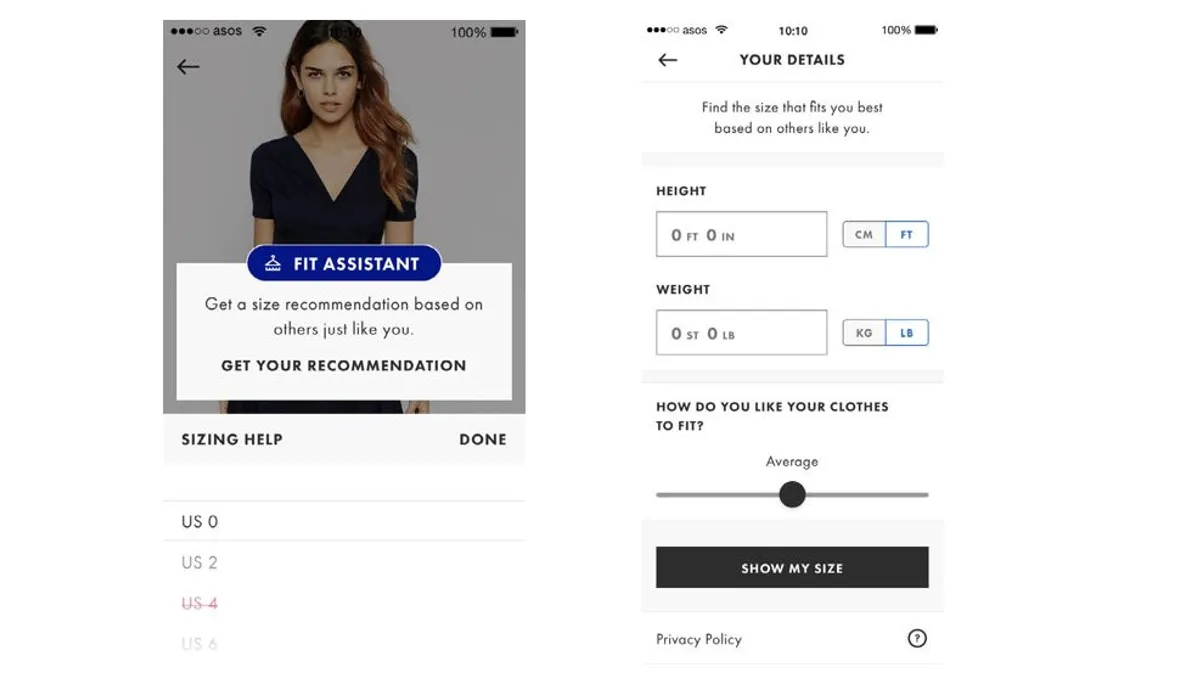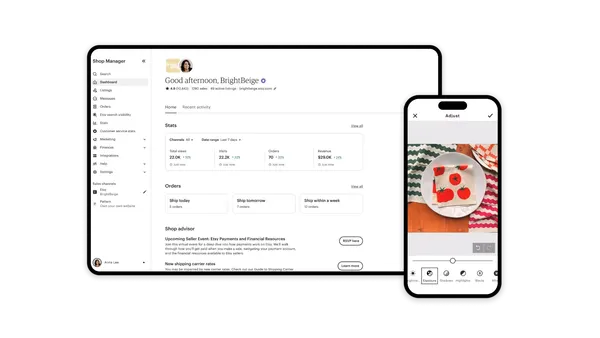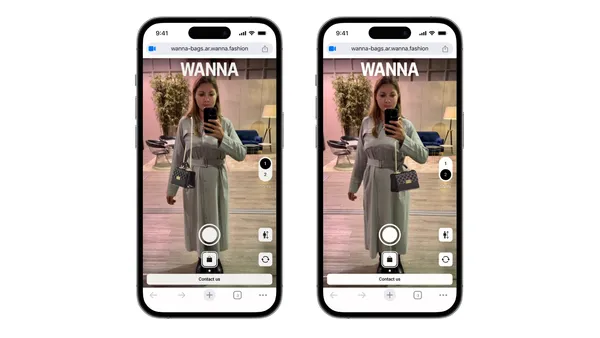Brief:
- Online fashion and cosmetics retailer Asos now has an in-app tool to help customers see clothing sizes based on prior purchases and returns. New customers who answer questions about their height, weight and fit preference can use the Asos Fit Assistant to get a more accurate clothing size for items in the online store, according to an announcement shared with Mobile Marketer.
- Andy Berks, digital product director at Asos, said the retailer sells between 800 and 900 different brands of clothing, making it difficult for customers to find the right size in each fashion line, ComputerWeekly reported.
- Fit Analytics, a sizing platform that combines a database of garment information with purchase records, powers the in-app sizing tool, which is rolling out globally after a successful test in the U.K. over the past year.
Insight:
Asos's in-app sizing tool aims to help customers with one of the biggest challenges in online shopping: finding the right fit across hundreds of different brands and styles. The more that Asos can help customers find the right-sized clothes, the more the online retailer can earn loyalty, drive repeat sales and avoid the costs of returns and re-stocking inventory. The Asos Fit Assistant is another example of the e-tailer's use of machine learning tools to improve recommendations to customers. The "your edit," Style Match and "You Might Also Like" tools use the technology to help shoppers discover new products based on their individual browsing and buying behaviors.
Asos is geared for the Instagram generation of shoppers who share selfies and fashion styles with friends and are more likely to dabble in mobile commerce than previous generations, pointing to how the Fit Assistant will be a likely welcome tool on the app as more consumers grow comfortable shopping on smartphones.
Clothing recommendation platforms like Fit Analytics, True Fit and Virtusize have been around for years, and have become increasingly important to retailers as more customers shop online. Asos targets fashion-conscious millennials and Gen Zers who have spending power and are open to experimenting with different styles. The younger of the two age cohorts have a wide variety of brands and retailers to choose from, and are typically considered too young to have yet developed strong brand preferences. To gain their loyalty, retail marketers need to prioritize personalization and positive customer service experiences through customer data and innovative digital tools. As part of that effort, Asos last month began letting customers use verbal commands to shop on the voice-controlled Google Assistant. Its Enki shopping guide, which also responds to text commands, aims to help shoppers find new clothing items among the online store's thousands of products and drive sales.














